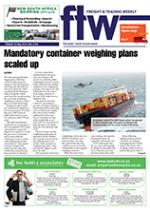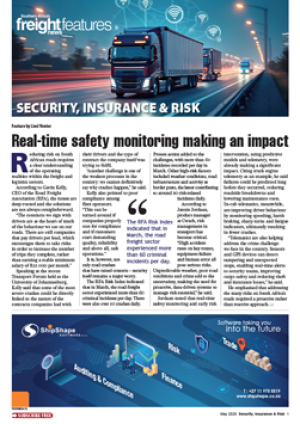Navigating
opportunities in
the air and road
express freight
industry to effectively
compete with established
players is no easy task for
entrepreneurs, according
to local emerging market
research and investment
strategy specialists.
“The industry as a whole
is a very tough industry to
break into,” said Frontier
Advisory researcher
Bekithemba Ngulube.
“Potential market
entrants face large barriers
to entry and high operating
costs due to rising fuel
costs. There is also a high
cost of developing new
networks.”
Ngulube said these
factors had translated
into consolidation within
the industry or takeovers
of existing companies as
evidenced by Aramex’s
buy-out of Berco Express
in 2011.
“Tight margins mean that
any potential entrants must
be able to compete with
already established players
either on price or service,
but even so,
it is not an
industry
where one
can easily
differentiate
from other
participants,”
Ngulube said.
And this
was because
the final
decision for
potential
customers
depended on just two
primary factors – the cost
of service and speed of
delivery between centres.
Ngulube said the
economic climate had also
impacted the demand for
airfreight services.
“The 2013 Iata annual
review identified strong
growth in emerging
markets in particular as
a key driver of growth in
passenger volumes in 2012.
There was an increase in
the growth in the value
of freight
transport
despite
declines in
volumes
during the
same period,”
she added.
“Air freight
volumes
generally are
correlated
to wider
economic
sentiment.
When the economy is
booming cargo owners will
generally make more use of
airfreight as they seek to get
their cargo delivered faster.”
Ngulube said overregulation
of the sector was
a major challenge hindering
growth in the express air
traffic industry.
“The industry would
benefit from more routes
being opened up allowing
market participants to
access more locations into
Africa. Allowing f lights
to stop in major centres
in Africa on the way back
from primary destinations
would aid in increasing load
factors, reducing the cost
of airfreight transport,”
Ngulube said.
“However, whether this
is feasible with the sector’s
dependence on passenger
transport remains to be
seen." Ngulube added that
rising fuel and transport
costs would continue to be
the headline challenge for
operators.
But road transport would
continue to be the most
competitive sector partly
aided by Transnet’s Market
Demand Strategy that will
see bulk cargo move from
road to rail, Ngulube added.
“Road freight transport
service providers
are taking market share
from air cargo operators
due to their highly
competitive pricing.
Frontier Advisory
director Hannah Edinger
said future opportunities
in the sector had been
presented by a trend of new
direct routes into Africa,
such as the airfreight
route to transport capital
equipment into the DRC for
the mining sector.
“There are opportunities
into Africa generally, and
within sub-sectors such as
textiles as well as autos,
but this is in competition
with road transport.
There are also domestic
route opportunities in
South Africa for servicing
smaller urban centres. This
could furthermore link to
the growth of the online
shopping and e-commerce
sector,” Edinger said.
INSERT & CAPTION
Growth in the
airfreight industry
will be driven by
regional integration
in the SADC.
– Hannah Edinger

